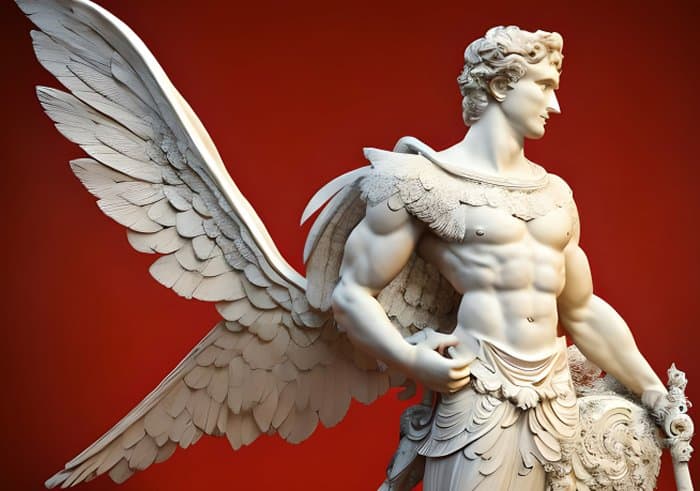Eros mythology is a fascinating and complex topic studied for centuries. Eros, the Greek god of love and desire, has been depicted in various ways throughout history. From his origins as a primordial deity to his role in the pantheon of the Olympian gods, Eros has captured the imagination of artists, writers, and scholars alike.
At its core, Eros mythology is about the power of love and desire. Whether it is the love between two individuals or the love of a god for his or her followers, Eros mythology explores the many facets of this powerful emotion. Some scholars have even argued that Eros represents the very essence of life itself, as it is through love and desire that we can create new life and perpetuate the species.
Despite its ancient origins, Eros mythology continues to be relevant today. From popular culture to academic discourse, the themes and ideas explored in Eros mythology continue to inspire and captivate audiences around the world. Whether you are a scholar of ancient history or simply someone interested in exploring the complexities of the human experience, Eros mythology is a topic that will fascinate and inspire.
Birth Story and Parents
Eros, the Greek God of Love, has a unique birth story and variations across different mythologies. In one story, Eros is the son of Aphrodite, the goddess of love and beauty, and Ares, the god of war. In another version, he is the son of Nyx, the goddess of night, and Erebus, the god of darkness. In another myth, Eros is born from an egg laid by Nyx and hatches into a beautiful youth.
Despite the variations, Eros is always depicted as a powerful and mischievous god who can cause love and desire in both mortals and gods alike. His arrows, which he shoots from his bow, are said to have the power to make anyone fall in love with the first person they see.
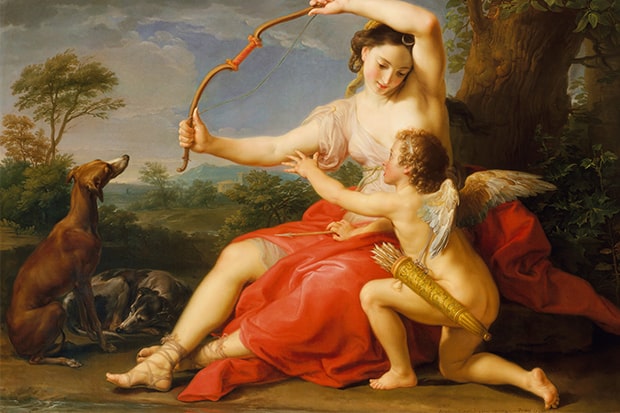
Eros’ parents also play an essential role in his mythology. In the version where he is the son of Aphrodite and Ares, he inherits his mother’s beauty and his father’s strength and courage. In the version where he is the son of Nyx and Erebus, he is associated with the darkness and mystery of night.
Overall, Eros’ birth story and parents are integral to his mythology and help to shape his character as a powerful and mischievous god of love.
Affairs and Relations and Children
Eros, the Greek god of love and desire, was often associated with affairs and relationships. In Greek mythology, Eros was the son of Aphrodite, the goddess of love, and Ares, the god of war. Eros was often depicted as a playful child, armed with a bow and arrows, which he used to pierce the hearts of mortals and immortals alike, causing them to fall in love.
Eros was known to have many affairs and relationships, both with mortal and immortal beings. One of his most famous relationships was with Psyche, a mortal woman he fell in love with and eventually married. Their relationship was not without its challenges, as Psyche was forbidden to look upon Eros’ face, which led to a series of trials that tested their love and devotion.
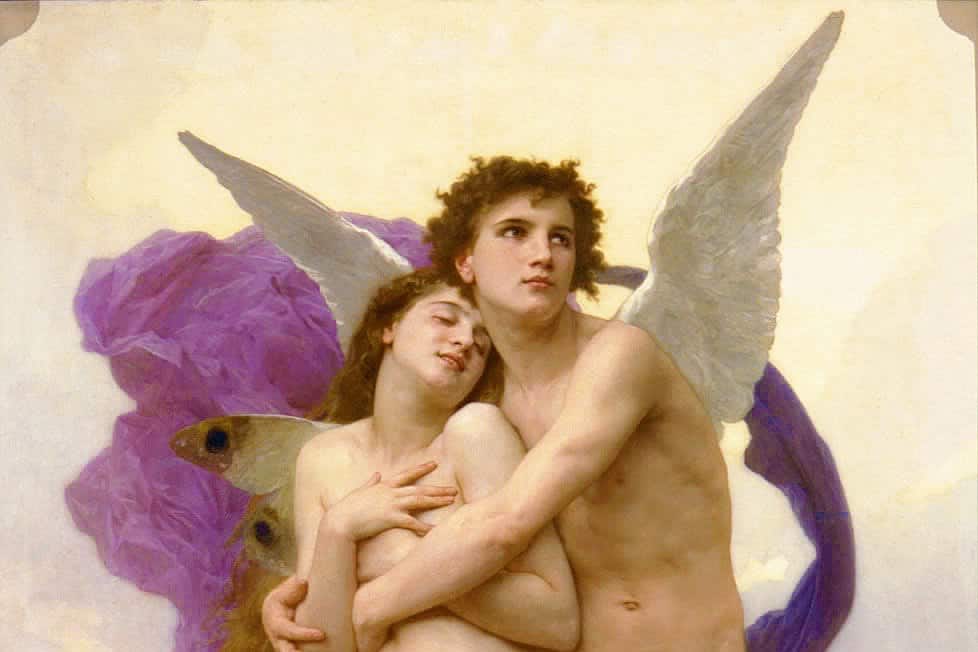
Eros was also known to have fathered many children with mortal and immortal partners. Some of his most famous children include Hedone, the goddess of pleasure, and Anteros, the god of requited love. Eros’ children were often associated with love, desire, and pleasure and played essential roles in Greek mythology.
Overall, Eros’ relationships, affairs, and his children played an important role in Greek mythology and continue to be studied and celebrated today.
Symbols and Powers
Eros, the Greek god of love and desire, is one of the most well-known figures of Greek mythology. His story has been told and retold throughout history, and his image has been used in art and literature for centuries. The symbols associated with Eros are numerous and varied, and they have different meanings depending on the context in which they are used.
Attraction and Desire
The most common symbol associated with Eros is the bow and arrow. According to mythology, Eros used his bow and arrows to make people fall in love with each other. The arrow represents the power of attraction and desire and is often depicted as being tipped with a heart-shaped point. The bow symbolizes Eros’s power to control people’s hearts and make them fall in love.
Dual Nature
Another symbol associated with Eros is the butterfly. The butterfly symbolizes transformation and change, representing Eros’s dual nature. In mythology, Eros was a god of love, desire, war, and destruction. The butterfly represents his ability to change from one form to another and his power to transform people’s hearts.
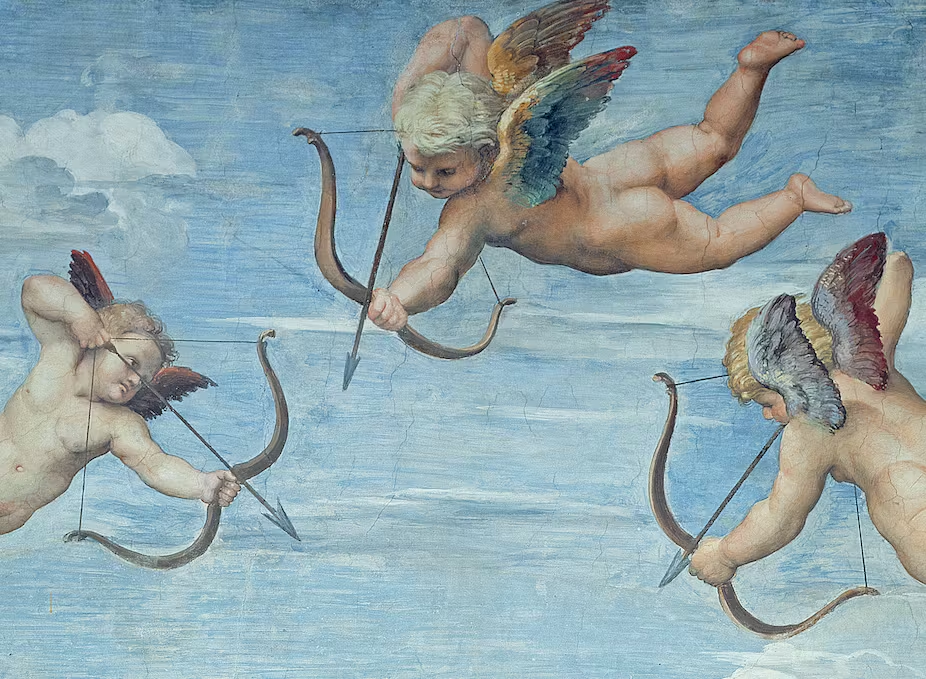
Divine Love
The rose is another symbol associated with Eros. In mythology, the rose was created by Aphrodite, the goddess of love and beauty, and it represents the divine love that Eros embodies. The rose is often depicted as red, which symbolizes passion and desire, and it is often used in art and literature to represent the love between two people.
Eros and Psyche
Eros and Psyche is a well-known myth from Greek mythology. The story tells of Eros, the god of love, and Psyche, a mortal woman who becomes his lover. The myth has been interpreted in many ways, with some seeing it as a story of love and redemption. In contrast, others view it as a cautionary tale about the dangers of curiosity and disobedience.
The story of Eros and Psyche begins with Psyche, a beautiful young woman who is adored by many suitors but has yet to find a husband. Her beauty is so great that people begin to worship her instead of the goddess Aphrodite, who becomes jealous and orders her son, Eros, to make Psyche fall in love with the ugliest man on earth. However, when Eros sees Psyche, he falls in love with her and takes her away to a secret hidden palace where they can be together.
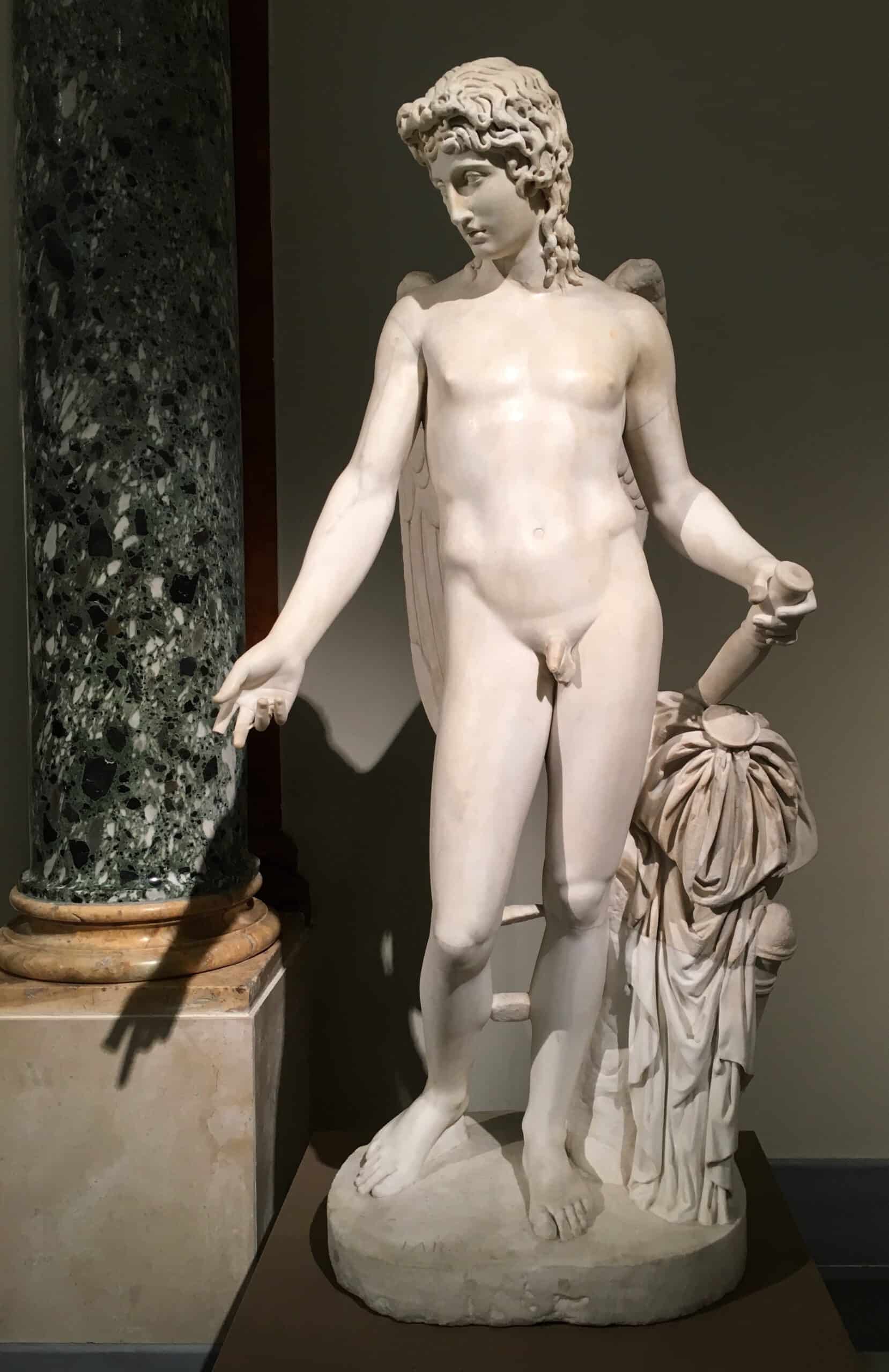
Psyche is forbidden from seeing Eros, and when she disobeys him and lights a lamp to look at him while he sleeps, she accidentally burns him with hot oil. Eros flees, and Psyche is left alone and heartbroken. She sets out on a journey to find Eros, and after completing several complex tasks, she is reunited with him. The two are eventually married and live happily ever after.
The story of Eros and Psyche has been interpreted in many different ways. Some see it as a story of love overcoming obstacles, while others view it as a warning against the dangers of curiosity and disobedience. The myth has been the subject of many works of art, literature, and music throughout history, and it continues to be a popular subject of study and interpretation today.
Eros and Thanatos Mythology
Eros and Thanatos are two opposing forces in Greek mythology. Eros, the god of love and desire, represents the life force and the instinct to create and reproduce. Thanatos, the god of death, represents the destructive force and the instinct towards death and decay.
According to Freud, Eros and Thanatos are two opposing instincts in every human being. Eros is the life instinct that drives us toward pleasure, creativity, and love, while Thanatos is the death instinct that drives us toward aggression, destruction, and death.
In Nez Perce River Mythology, the question of which force is prior, Eros or Thanatos, is still debated. However, it is clear that the two forces are ultimately intertwined and cannot exist without each other.
In Greek mythology, Eros is often depicted as a young, handsome god with wings carrying a bow and arrows. He is the son of Aphrodite, the goddess of love and beauty. Eros is associated with romantic love, sexual desire, and the creation of new life.
On the other hand, Thanatos is often depicted as a dark, shadowy figure carrying a sword or a scythe. He is the twin brother of Hypnos, the god of sleep. Thanatos is associated with death, decay, and the destruction of life.
The myth of Eros and Psyche is one of the most famous stories in Greek mythology. It tells the story of a mortal woman named Psyche who falls in love with Eros. However, their love is forbidden, and they must overcome many obstacles before being together. The myth is often interpreted as a metaphor for the struggle between Eros and Thanatos and the power of love to overcome death.
In conclusion, Eros and Thanatos are two opposing forces in Greek mythology, representing the life force and the instinct toward death. While they may seem like opposites, they are ultimately intertwined and cannot exist without each other. The myth of Eros and Psyche is a powerful reminder of the power of love to overcome even the darkest forces of death and destruction.
Worship
Eros was a deity in ancient Greek mythology associated with love, desire, and fertility. He was often depicted as a winged youth carrying a bow and arrows, which he used to shoot at people and make them fall in love. Eros was widely worshipped in ancient Greece, and his cult significantly impacted the culture and society of the time.
Attention
The worship of Eros was an essential aspect of ancient Greek life, and it played a significant role in shaping the culture and society of the time. From art and literature to philosophy and politics, the influence of Eros was felt across all aspects of Greek life. In this section, we will explore the worship of Eros in more detail and examine its impact on ancient Greek society.
Interest
The worship of Eros was a complex and multifaceted phenomenon that took many forms across the various regions and city-states of ancient Greece. Some worshippers saw Eros as a powerful force of nature, potentially dangerous and in need of control by society. Others saw him as a more benevolent figure associated with love, beauty, and creativity.
Desire
The cult of Eros was prevalent in Athens, where he was worshipped as part of the Panathenaic festival. During this festival, a statue of Eros was carried through the streets of Athens, and worshippers would offer him gifts and sacrifices. The cult of Eros was also closely associated with the cult of Aphrodite, the goddess of love and beauty.
Action
Overall, the worship of Eros was a significant aspect of ancient Greek culture and society. It played a role in shaping the art, literature, philosophy, and politics of the time, and it continues to be a source of fascination and inspiration to this day. Whether seen as a powerful force of nature or a more benevolent figure associated with love and beauty, Eros remains an integral part of the human experience and a symbol of the enduring power of desire.
Interesting Facts
Eros, also known as Cupid, is one of the most famous figures in Greek mythology. The god of love, desire, and attraction, Eros has been the subject of countless stories, poems, and works of art throughout history. In this section, we’ll look at some interesting facts about Eros that you may not have known.
Firstly, Eros is often depicted as a young boy with wings carrying a bow and arrow. The bow and arrow represent his ability to make people fall in love with each other. Interestingly, the arrows have different effects depending on which end they are shot from. If shot from the golden end, the arrow would make the person fall in love with the next person they saw. If shot from the lead end, the person would feel repulsed by the next person they saw.
Secondly, Eros is the son of Aphrodite, the goddess of love, and Ares, the god of war. This unusual parentage has led to many stories and myths about Eros and his family. For example, it is said that Eros once shot an arrow at his mother, causing her to fall in love with Adonis, a mortal man. This caused great jealousy and anger in Ares, who was Aphrodite’s husband at the time.
Finally, Eros is not just a character from Greek mythology. He has also been a popular figure in art, literature, and culture throughout history. Eros is still a famous symbol of love and desire today and is often used in advertising and marketing campaigns.
In conclusion, Eros is a fascinating figure in Greek mythology, with many interesting stories and facts associated with him. Whether you’re a fan of mythology, art, or love, Eros is a figure worth learning more about.
Conclusion
In conclusion, the symbols associated with Eros are numerous and varied, and they have different meanings depending on the context in which they are used. The bow and arrow represent the power of attraction and desire, the butterfly represents the dual nature of Eros, and the rose represents the divine love he embodies. These symbols have been used in art and literature for centuries and continue to be used today to represent the power of love and desire.
Frequently Asked Questions
Who is the god of love in Greek mythology?
Eros is the god of love in Greek mythology. He is often depicted as a winged young boy with a bow and arrows, which he uses to make people fall in love.
What is the story of Orpheus and Eurydice?
Orpheus was a musician who fell in love with Eurydice. When she died, he went to the underworld to bring her back. Hades, the underworld god, agreed to let Eurydice go if Orpheus could leave the underworld without looking back. Unfortunately, Orpheus couldn’t resist the temptation and looked back, causing Eurydice to be pulled back into the underworld forever.
What is the myth of Pygmalion and Galatea?
Pygmalion was a sculptor who fell in love with one of his creations, a statue of a woman named Galatea. He prayed to Aphrodite, the goddess of love, to bring the statue to life. Aphrodite granted his wish, and Pygmalion and Galatea lived happily ever after.
Who did Hero fall in love with in the myth of Hero and Leander?
The hero fell in love with Leander, a young man living on the Hellespont’s other side. Every night, Leander would swim across the Hellespont to be with Hero. One night, a storm caused Leander to drown, and Hero, heartbroken, threw herself into the sea to be with him.
What is the symbol of Eros in mythology?
The symbol of Eros in mythology is a bow and arrow. Eros uses his bow to shoot arrows at people, causing them to fall in love.
What are the powers and abilities of Eros in mythology?
Eros has the power to make people fall in love. He uses his bow and arrows to shoot people with love and desire. Eros is also associated with fertility and the creation of new life.

